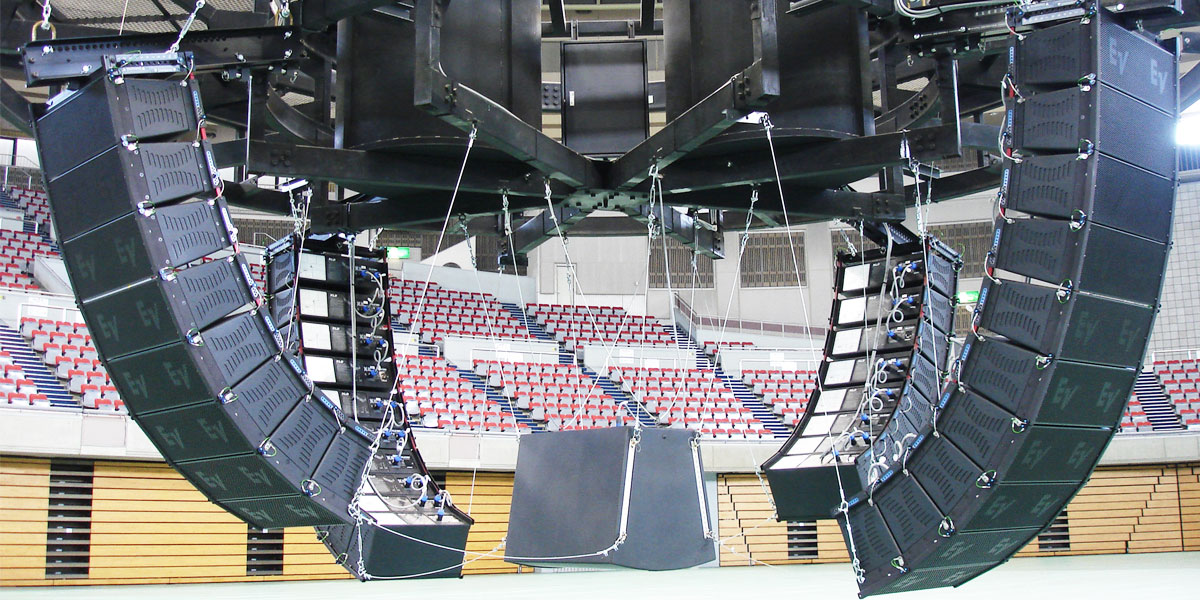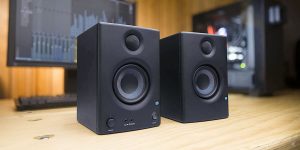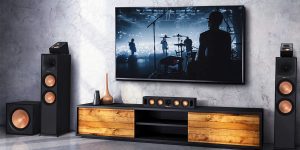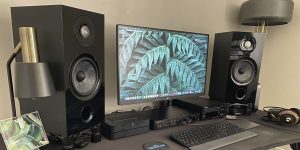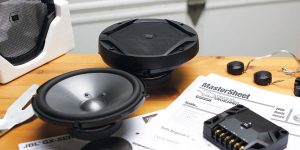The modern concert equipment industry offers a wide range of loudspeaker systems to suit every taste, budget, and requirement. However, despite their diversity, they all share common features: a microphone for sound pickup, an amplifier for electronic amplification, and at least one loudspeaker for audio reproduction. In this article, we will focus on two types of loudspeakers: line array speakers vs point source loudspeakers, taking a closer look at their functionality and capabilities, as well as their potential advantages and disadvantages.
Understanding line array speakers
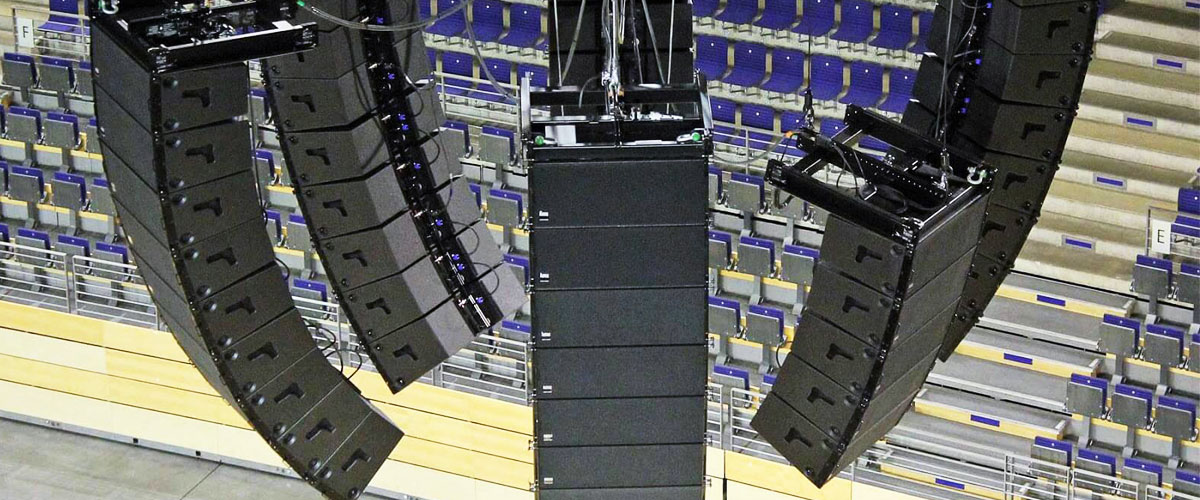
A line array loudspeaker system is a series of identical loudspeakers arranged in a row, either vertically or horizontally, hence the name. This design allows the sound waves to interfere with each other and be distributed over long distances, so it is more often used for large events (music festivals, football matches, concerts in large arenas and stadiums, etc.).
Loudspeakers tuned to different frequency waves (low, mid, and high) are lined up or suspended one above the other, creating a single sound source with a clearly directed sound stream to the most remote areas of the event. The drivers are precisely aligned and synchronized so that the sound waves are structurally unified, resulting in a cohesive and loud sound, eliminating unwanted dispersion and loss to the sides. Interference or suppression of sound waves is minimized in the line array design.
Understanding point source speakers
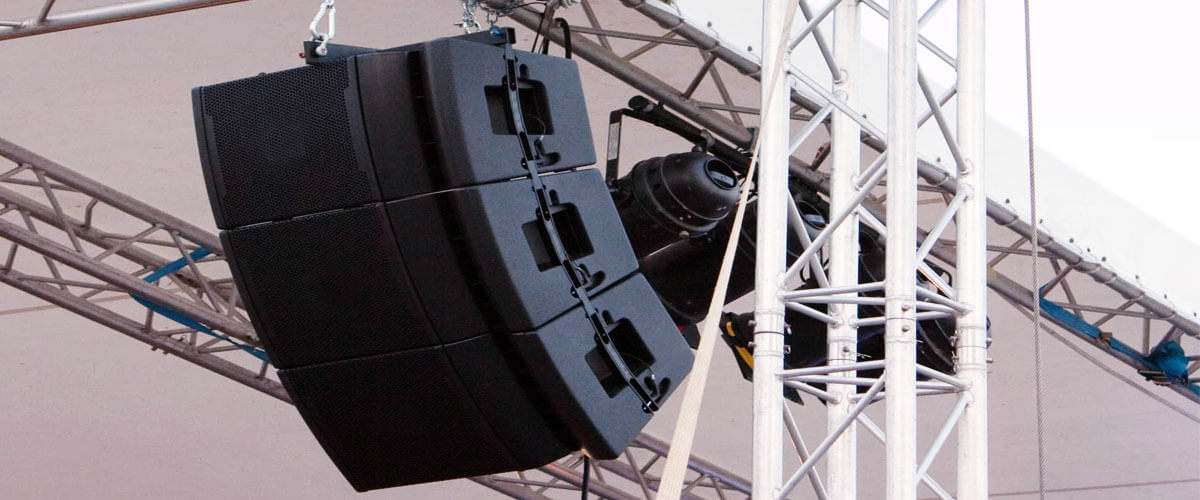
Point-source loudspeakers are often used individually: a single loudspeaker or multiple loudspeakers spaced apart to provide the full range of the sound spectrum from a single point. Each unit acts as a separate, independent sound transducer, but they can often be used together to provide effective sound coverage.
Regular speakers have various shapes and sizes and a slightly different sound wave pattern, which is more spherical and wider vs. the sharply focused beam of the line array. These loudspeakers are very popular for providing quality sound in small rooms and halls of irregular shape; their portability, wide price range, and ease of adjustment make them very popular in the organization of many events (clubs, restaurants, stores, airports, lecture halls, cinemas, etc.). In addition to being placed on the floor, they are often mounted under the stage dome to cover a larger hall area and achieve the maximum ideal and clear coverage.
Pros and cons of comparison
Line array can be loud and powerful, and this has been a big advantage vs. point source. Still, with recent developments and improvements in drivers, digital signal processing (DSP), and improvements in enclosure design, there has been a trend to bring back and popularize point source speakers.
The table below summarizes the distinct advantages and disadvantages of each system:
| Point Source Speakers | Line Array | ||
| Pros | Cons | Pros | Cons |
| Easy to set up, portable, and versatile. | Cannot handle high sound pressure levels. | Precise control of dispersion over long distances; great for large events. | Not suitable for small spaces and rooms with irregular floor plans. |
| Wide sound coverage, ideal for small to medium-sized venues. | They may not provide the same fidelity as line arrays in acoustically complex rooms. | Minimize volume fluctuations and provide consistent sound quality throughout the venue. | Requires more time and experience to customize and has a high cost. |
| Cost-effective. | Can withstand high sound pressure levels. | Cumbersome constructions | |
Choosing the right speaker system for your venue
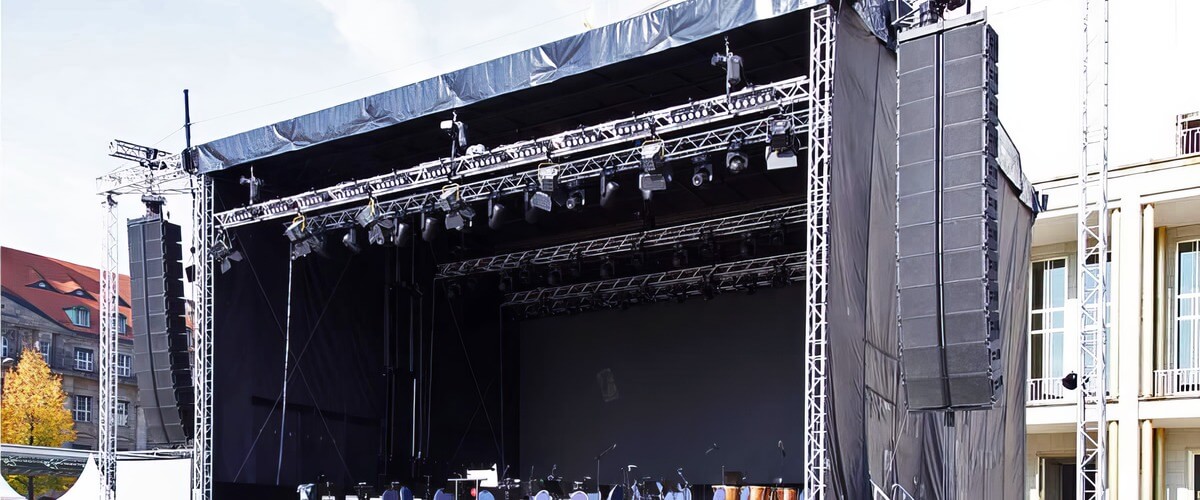
If you are faced with choosing the right loudspeaker system for your needs, here are some considerations to help guide you:
- Evaluate the physical parameters of your venue, the number of seats, and the architectural features of the venue that affect sound reflection.
- Point source systems are easier to set up and install in smaller venues, and their coverage will be sufficient for small audiences and medium-sized halls.
- For rooms with odd layouts, complex acoustics such as those prone to excessive reflections or echoes, or irregular seating arrangements, individual loudspeakers are easier to position and set up. They provide the right vector of sound in exactly the right direction.
- If you are planning large events where you need to deliver clear, focused, loud sound to remote seating areas, line array loudspeakers are the obvious choice.
Also, if space permits, consider combining a line array with additional spot speakers and consult a professional sound engineer who can help you evaluate your space and recommend the best loudspeaker system for your needs.

